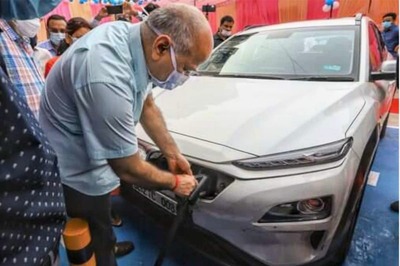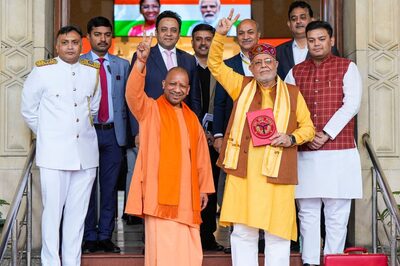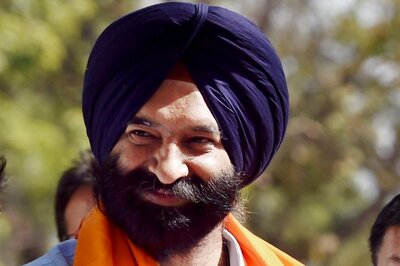
views
The upcoming December 23 mini-auction for IPL 2023 got more interesting when the BCCI announced the introduction of the ‘Impact Player’ rule. “From the TATA IPL 2023 season a tactical concept will be introduced to add a new dimension to the IPL, wherein one substitute player per team will be able to take a more active part in an IPL match,” the Indian cricket board announced on December 2.
This was not the first introduction of the “tactical concept” in the Indian cricket ecosystem as a dry run of the same was done in the recently-concluded Syed Mushtaq Ali Trophy. Most teams used it to their advantage and Delhi were the first to make use of it when they replaced top-order batter Hiten Dalal with off-spinner Hrithik Shokeen in the Syed Mushtaq Ali Trophy.
The ‘Impact Player’ rule is certain to affect the auction dynamics and will change the way Playing XIs have looked in the IPL in the past. With the option of switching a player midway as per situation, the sides can now afford to not lose too much sleep over the balance, which remained a keyword in the cash-rich league, and can have the specialists to do the job. Not saying the all-rounder lose relevance and importance, it’s just that the teams get an option to use and rotate their specialists better.
Can the Impact Player be picked from the complete squad?
No, the captain and management have the option of picking the Impact Player from the list of 15 (Playing XI + four substitutes) submitted at the time of the toss. It’s not necessary to decide which one of the four would be the IP but the management can’t look beyond the list.
Is it compulsory to pick an IP?
No, it is not compulsory to pick an IP as the rule is completely tactical in nature.
Can the IP be used multiple times?
No, the move can be made just once during the game. The player replaced by IP can no longer take any part in the fixture.
Will IP be allowed in rain-affected or shortened game?
Yes, but not if the game is shortened to less than 10 overs per side. If the scheduled overs are more than ten but less than 20, player can be introduced with a cut-off point.
Can a batter only replace a batter, and a bowler only a bowler?
No, there is no restriction with regard to the specialisation of the player. A batter can replace a bowler and vice-versa. It’s purely based on how the team management wants to make the best use of their 15 as per the match situation.
Is there a restriction on the number of overs IP can bowl?
No, IP can bowl his quota of four overs. Even if the IP replaces a bowler who has bowled, he can still complete his quota of four overs.
When can the IP be introduced into the match?
The IP can replace any player of the XI at any point before the end of the 14th over of either innings. In the case of the team batting first, a call on IP can be taken during the innings break. Say for instance can use all their batters and then replace one of the batters with a bowler at the end of the innings. Punjab faced such a situation in the Syed Mushtaq Ali Trophy fixture against Karnataka. Batting first, there was no change in the announced XI till the end of their innings and they only introduced the IP in the fifth over of the Karnataka chase when seamer Ashwani Kumar replaced pure batter Shubman Gill for the remainder of the fixture.
How will IP affect the IPL auctions?
No direct impact as such but the teams can now afford to not lose sleep over not having enough all-rounders in the ranks as effective and smart use of the IP can cover up for that. A team can play 6-7 pure batters and replace them with a bowler at the innings break. This just opens up a different approach while deciding on the Playing XI, and building the squad for the season.
Toss, dew and playing conditions’ role minimised?
The IP rule to a certain extent minimises the role of toss and dew to decide the outcome of a match. It has been observed in the IPL that the evening dew becomes a major factor in the games and most teams, especially the ones heavy on spin, look to chase. There have been occasions where teams have tweaked their combination in anticipation of dew but the dew never arrived. Till the time there is a permanent solution to the dew problem, the IP just opens up more options during the game and the toss could no longer remain the all-important factor in evening games at venues with heavy dew. A team can now play to their strengths and then make the necessary Playing XI adjustment as per match and conditions situation.
Specialists in demand?
Don’t be surprised to see an increase in demand for specialists in the upcoming IPL mini-auction as the franchises now get the chance to retain the balance and multi-dimensional look of the squad using the IP rule.
Was a rule similar to IP tried in any other T20 league around the world?
Yes, the Big Bash League used the X-Factor rule.
Is it the same as IP?
Not the same but similar in nature.
How is X-Factor different from IP?
The X-Factor allows the two teams to substitute one of their Playing XI members with either the 12th or 13th player on the team sheet. The move can take place at the end of the 10-over mark of the first innings and the player being replaced shouldn’t have bowled more than over or batted in the match. Unlike the X-Factor, IP allows teams to pick from the remaining four on the team sheet of 15 and there are no criteria in place for the player being replaced.
Get the latest Cricket News, Schedule and Cricket Live Scores here




















Comments
0 comment